Being a busy parent can make it tough to teach kids about conflicts. But, teaching them to resolve conflicts healthily is crucial. A parenting expert and former school counselor says that while conflicts are inevitable, teaching kids to handle them well is key. This helps them learn important skills like empathy, communication, and problem-solving1.
Learning to resolve conflicts in a healthy way can prevent small problems from getting bigger. It also makes relationships stronger and boosts self-confidence1. This article will share 7 effective ways to teach kids how to resolve conflicts. These strategies will help them succeed now and in the future.
Key Takeaways
- Teach children conflict resolution skills to prevent small issues from escalating and improve overall communication and understanding1.
- Help kids build stronger relationships by learning empathy, active listening, and problem-solving during conflicts1.
- Boost children’s self-efficacy and self-esteem by empowering them to handle difficult situations confidently1.
- Encourage the use of techniques like I-Statements and assertive boundary setting to promote clearer communication1.
- Teach the importance of taking turns, sharing, and finding alternative activities during conflicts to shift focus away from confrontation1.
The Importance of Teaching Conflict Resolution Skills

Learning conflict resolution skills is key for kids, as conflicts are a part of life2. Without teaching, kids might use aggressive ways like name-calling or hitting when upset2. But, when kids learn healthy ways to solve conflicts, they can do so in a respectful and productive way2. This brings many benefits.
Why Conflict Resolution Skills Matter
- Preventing small problems from getting bigger2
- Strengthening relationships by practicing empathy and solving problems2
- Boosting self-esteem and confidence in dealing with tough situations2
Benefits of Healthy Conflict Resolution
Teaching conflict resolution early helps build strong, healthy relationships2. It encourages kids to develop empathy2. Role-playing is a great way to teach kids how to solve conflicts2.
Listening actively is key to resolving conflicts and making sure everyone’s feelings are heard2. Encouraging kids to see things from different perspectives helps them understand others better2. Parents play a big role in showing kids how to behave towards others2. Giving kids chances to practice solving conflicts in group tasks is also helpful2. Praising kids when they solve conflicts in a healthy way is important2.
Conflicts are common in schools, with kids arguing over toys, control, and disagreements with friends3. Teaching kids how to solve conflicts is crucial for building strong relationships, problem-solving skills, and healthy communication3. Kids learn important strategies like ignoring certain behaviors, practicing empathy, and apologizing, which help them manage conflicts3.
Conflict resolution skills are important for both kids and adults, with adults playing a key role in teaching these skills3. In schools, using role-playing, storytelling, group discussions, and collaborative projects helps teach kids how to solve conflicts assertively3. Encouraging calmness before solving conflicts, teaching kids to ask for help, and emphasizing boundaries create a good environment for resolving conflicts in schools3.
Help Children Calm Down First
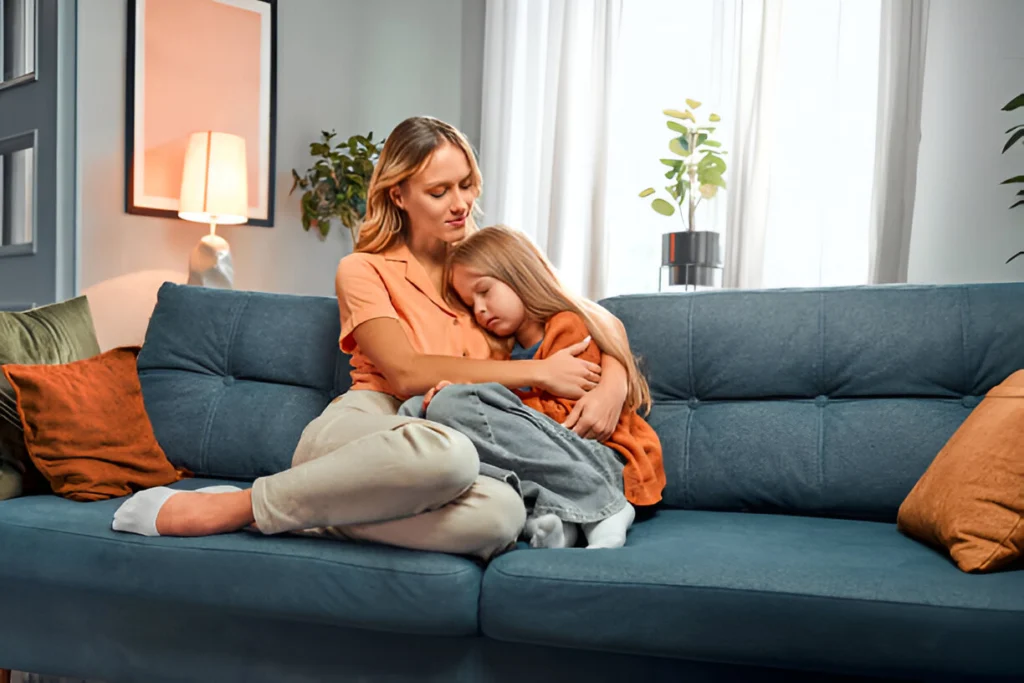
Before trying to resolve a conflict, it’s key to help kids calm down first. When emotions are high, it’s hard to talk clearly. Try counting to 10 or stepping away to calm down before tackling conflicts with kids.4
Deep breathing, counting to 20, or taking a short break can help. Studies show that with practice, adults and kids can solve conflicts faster and come up with more ideas.5 Only when they’re calm should you help them through the conflict resolution process.
Children need lots of chances to practice solving conflicts with help from someone more experienced.5 Between ages 3 and 10, kids need positive interactions to learn social skills.6 The conflict resolution/mediation model works best for kids over three who can express their feelings6.
Using this model helps kids become less aggressive and solve problems on their own.6 Regularly mediating conflicts makes kids better at finding solutions and speeds up negotiations.6
Children must be able to say yes or no to ideas to solve conflicts.5 Adults should let the mediation process finish to avoid more fights.5 Through mediation, kids learn to solve problems, communicate, and see different views5.
Encourage Win-Win Solutions
When we solve conflicts, we aim for a solution that benefits everyone. This “win-win” method helps kids talk about their feelings and ideas. They then work together to find solutions that please everyone7.
The goal is to find a middle ground where both sides feel their needs are met. Or at least, they’re okay with the outcome7. Teaching kids to solve problems together helps them learn important life skills8.
Finding a Mutually Agreeable Compromise
Conflict resolution isn’t about one person winning and the other losing. It’s about finding a solution that benefits everyone7. Kids learn that working together can lead to a “win-win” outcome where both sides’ needs are met9.
This might mean making some compromises. But the result is a resolution that makes both sides feel heard and satisfied9.
With practice and guidance, kids can identify the causes of conflicts. They learn to see things from different perspectives and come up with creative solutions8. They understand that conflicts can sometimes lead to better outcomes8.
By focusing on solving problems together, kids develop skills that last a lifetime8.
“The greatest mistake we make is living in constant fear that we will make one.”
– John C. Maxwell
Encouraging win-win solutions helps kids feel empowered to solve conflicts peacefully9. With the right guidance and practice, they learn to tackle problems in a constructive way. This prepares them for success in school, relationships, and beyond9.
Use Games of Chance
Playing a simple game of chance can help kids solve conflicts. Games like rock-paper-scissors, coin tosses, or dice rolls let the winner decide. This makes solving conflicts fun and less serious for kids10.
Managers spend a lot of time solving workplace conflicts. Unresolved conflicts can lower morale and performance. Playing games can help teams solve conflicts and work together better10.
Conflicts happen when people see things differently or have different goals. Good communication is key in causing and solving conflicts10. Kids who learn to solve conflicts are less likely to bully. Families who play games together are happier11.
Using games of chance makes conflict resolution fun for kids. It helps them practice solving problems. This approach also teaches them to think creatively and understand others’ views10.
Conflict is a normal part of life. Teaching kids how to handle it is important. Games to resolve conflicts help kids find solutions that everyone agrees on. This builds stronger relationships and a positive view of solving problems10.
Know When to Ask for Help
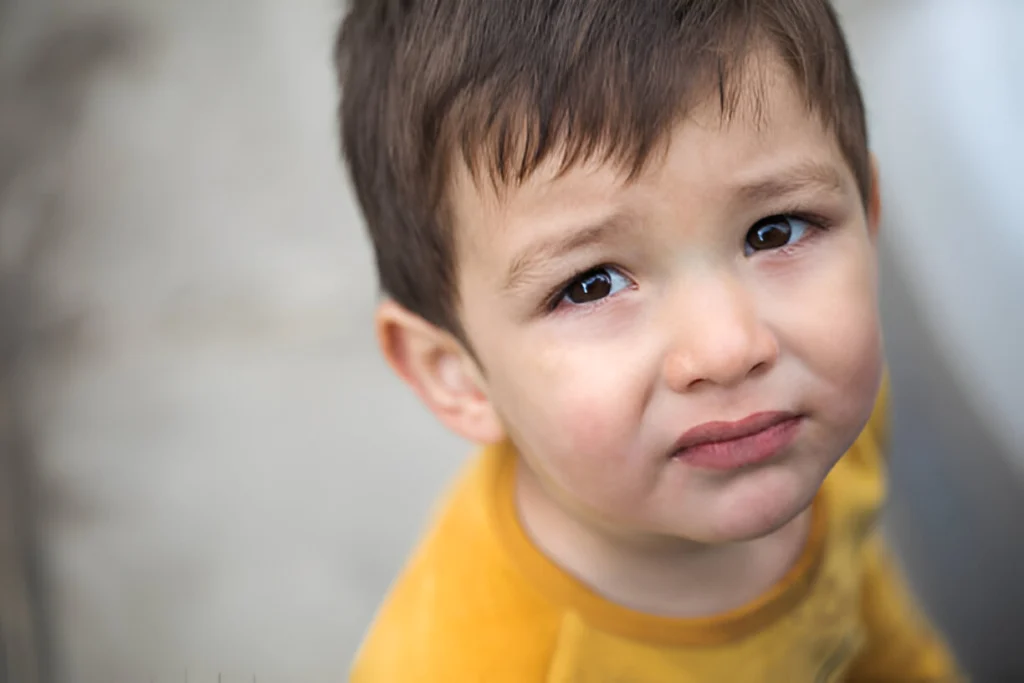
Children face many challenges, and it’s important to remember they don’t have to solve everything by themselves. Encouraging them to ask trusted adults for help is a key skill in conflict resolution, especially with big problems12. The preschool years are critical for learning how to handle conflicts. Teaching kids when to ask for help can stop problems from getting worse12.
Learning to solve conflicts is essential for getting along with others and building strong relationships. Getting adults involved can really help kids solve their problems12.
Recognizing Big vs. Small Problems
Teach kids to tell the difference between big and small problems. Big problems, like bullying, need adult help. Small problems, like sharing a toy, they can try to solve on their own12.
Teaching problem-solving in school can help kids solve conflicts by themselves. Giving them tools in class can also improve their skills in solving problems and conflicts12.
Knowing when to ask for help is a crucial skill. It lets kids handle conflicts well and get help when they need it.
| Big Problems | Small Problems |
|---|---|
| Bullying, threats, harassment | Sharing toys, taking turns, minor disagreements |
| Require adult intervention | Can be resolved independently |
| Escalate quickly if not addressed | Opportunities for learning conflict resolution skills |
Teaching kids to know the difference between big and small problems helps them. It lets them solve conflicts on their own but also know when to ask for help from a trusted adult13. This builds emotional intelligence and positive ways to handle conflicts, helping them throughout their lives.
Practice Ignoring Annoying Behaviors
Learning to ignore annoying behaviors is key for kids to solve conflicts14. A lesson for 3rd and 4th-graders taught them how to handle disagreements. Dan St. Romain used call and response, call and repeat, and hand gestures to keep them engaged14.
Ignoring annoying behavior can calm down a situation. It stops a small problem from getting bigger. Teachers teach kids to ignore by using role-playing. They practice deep breathing, continuing their activity, and not reacting14.
Students learn that ignoring isn’t just about stopping someone. It’s about not letting mean behavior bother them. They practice ignoring with self-talk and scenario cards14.
By ignoring annoying behavior, kids learn to control themselves and solve conflicts early. This skill will help them a lot in life.
Teach I-Statements and Active Listening
Teaching kids to express their feelings and needs is key to solving conflicts. Using “I-Statements” is a great way to do this. These statements share how they feel without blaming others15. This method helps kids talk better during fights, avoiding blame and anger15.
Adding active listening to I-Statements is even better for solving problems15. When kids listen well, they can have better talks and find solutions together16. This way, conflicts don’t get worse and can lead to real talks about what’s causing the problem16.
Using I-Statements and listening well can change your family for the better15. It makes talking and solving problems better, and it makes your relationship stronger15. Teaching these skills now will help your kids deal with conflicts better in the future17.
“Using ‘I-Statements’ can help reduce blaming, accusations, and defensiveness in conflict situations, opening the door for more constructive dialogue.”16
Remember, dealing with conflicts is a normal part of life. Teaching kids about I-Statements and listening helps them grow emotionally. It gives them the tools to solve problems peacefully17.
Conflict Resolution for Children
Teaching kids conflict resolution skills early is key for their growth and success. A preschool teacher notes, “If we wait until they’re in fourth grade or middle school, they’ve already learned how to solve problems. But it might not always be the best way.”18
Teaching kids to calm down, find solutions that work for everyone, and use “I-Statements” helps them handle conflicts well18.
Research shows that conflict with pre-teens and teenagers is normal and healthy, showing it’s common in this age group.19 Teaching kids how to resolve conflicts can lower family stress, improve relationships, and increase respect for each other’s views19.
A study with 90 kids aged 3 to 6 found that emotional understanding is key in solving peer conflicts20. Kids who understand emotions better are more likely to use positive ways to solve conflicts and be accepted by their peers20.
By focusing on conflict resolution skills in children, parents and teachers give them the tools to deal with challenges and build strong relationships for life.
Reinforce Taking Turns and Sharing
Teaching kids to take turns and share is key to solving conflicts21. By 2 years old, kids can start learning how to solve problems with help21. But, kids at 15 months need more help because they can’t talk much yet21.
The Importance of Cooperation
Learning to cooperate helps prevent fights and teaches kids to think about others21. When kids solve problems on their own, it boosts their problem-solving skills21. Praising them for solving conflicts the right way helps them keep doing it21.
For 1-year-olds, it’s better to guide them in conflicts than expect them to solve it21. Helping kids feel better and get involved in fixing things after a fight teaches them to be resilient21.
Teachers say teaching kids to share and play together is very important22. The article shows a three-step way to help kids deal with conflicts22.
Teaching kids to solve conflicts starts early, around 2 years old21. In the classroom, conflicts like the one between Jamaya and Ian happen often22. Teachers need to keep practicing the three-step approach to help kids learn22.
| Conflict Resolution Strategies | Educator Support |
|---|---|
| Equipping children with conflict resolution skills early on | 92% of educators consider it crucial23 |
| Students engaging in role-playing scenarios to practice conflict resolution | 67% of educators support this idea23 |
| Structured activities that prompt students to assess the size of a problem and their emotional response | 78% of educators believe students benefit from this23 |
| Using decision matrices to help students evaluate the pros and cons of their actions during a conflict | 94% of educators advocate for this23 |
| Peer mediation by fifth-grade students at Mid-Pacific Elementary School in Hawaii | Resulted in a 65% decrease in conflicts among third- and fourth-graders23 |
| Using a six-step Peace Path at elementary schools | Resolved conflicts independently in 82% of cases23 |
By teaching kids to take turns and share, educators help them solve conflicts and make friends21. This approach is not just about avoiding fights. It also teaches kids about working together, understanding others, and solving problems22.
Suggest Doing Something Else
When kids get into a conflict, try suggesting they do something else. This can shift their focus away from the problem and onto something better6.
For example, you could suggest they play with a different toy, try a new game, or enjoy a solo hobby. Redirecting their attention can help deescalate conflicts before they get worse6.
This method not only interrupts the conflict but also gives kids a chance to behave in a positive way. By shifting the focus, you help them redirect their energy and solve problems in a better way13.
- Suggest a new activity or game to play
- Encourage them to find another toy or object to focus on
- Guide them towards a solo hobby or creative pursuit
The goal is to interrupt the conflict cycle and give kids alternative outlets for their energy and attention. This helps them learn healthy conflict resolution skills that last a lifetime13.
| Conflict Escalation Factors | Percentage |
|---|---|
| Avoidance response to conflict by children | 60% |
| Conflicts involving blaming others rather than taking responsibility | 90% |
| Conflicts that escalate due to wrong responses rather than the initial conflict | 85% |
Knowing these stats helps parents and caregivers see the need for quick intervention and redirection in conflicts24.
“Conflict is an unavoidable part of life and can begin early. Teaching conflict resolution strategies for students early on is crucial.”
By suggesting alternative activities, you can help your kids shift their focus and find constructive ways to resolve conflicts. This method not only de-escalates tension but also fosters the development of essential life skills13.
Classroom Activities for Conflict Resolution
Teaching high school students how to solve conflicts is key. It helps them deal with tough situations in school and life. Role-playing is a great way to practice these skills in a safe space before real conflicts arise25.
Role-Playing Scenarios
Role-playing lets students see things from different angles and learn to solve problems together25. It’s a hands-on way to teach them how to handle conflicts well25. Some schools also use peer mediation to help students solve problems together26.
Peer Mediation Programs
Peer mediation teaches students to solve their own problems. It helps them learn to communicate and work together26. This makes schools better places for everyone26.
By using different activities to teach conflict resolution, teachers help students become better at solving problems. They learn to get along and grow into caring, responsible people2526.
| Conflict Resolution Activity | Description | Key Skills Developed |
|---|---|---|
| Role-Playing Scenarios | Students act out hypothetical conflict situations and practice constructive responses. | Empathy, problem-solving, communication |
| Peer Mediation Programs | Trained student mediators assist their peers in resolving disputes. | Collaboration, negotiation, responsibility |
| Conflict Resolution Worksheets | Students complete activities that reinforce conflict resolution strategies. | Critical thinking, self-awareness, conflict management |
| Negotiation Scenarios | Students practice negotiating to reach mutually agreeable solutions. | Compromise, communication, problem-solving |
By using various activities to teach conflict resolution, teachers help students solve problems well. They learn to get along and grow into caring, responsible people2526.
Encourage Apologizing and Forgiveness
Teaching kids to apologize and forgive is key. Studies show that saying sorry can fix problems, rebuild trust, and even lower blood pressure27. Parents can teach these skills by showing them and making them important.
Most kids find it hard to say sorry, showing they need to learn this skill28. To help, focus on three parts: feeling sorry, taking responsibility, and fixing the problem28. Encourage them to say they’re sorry, understand how they hurt others, and make things right.
- Even young kids feel better when they get a real apology27.
- Real apologies can fix hurt feelings and mend relationships in kids27.
- Parents are key in showing kids how to be sorry and forgive27.
Forgiving is also crucial in solving conflicts. Making amends is as important as saying sorry in fixing hurt feelings.27 Talking about feelings and understanding why someone acted badly helps kids learn to forgive and apologize better27.
| Common Apology Busters | Effective Apology Components |
|---|---|
| Justifying words or behavior | Regret |
| Blaming the victim | Responsibility |
| Making excuses | Remedy |
| Minimizing consequences | – |
Teaching kids to solve problems and talk about feelings makes them better at apologizing and forgiving27. Seeing parents say sorry helps kids understand and value saying sorry too.29 Practicing with role-plays helps kids learn to apologize in real life29.
“When teaching forgiveness, focus on the journey, not just the end result, for kids’ relationships.”29
By teaching kids to apologize and forgive, parents help them develop important social skills. These skills are key for solving conflicts and keeping relationships strong.
Follow Up and Reinforce Skills
It’s key to keep working on conflict resolution skills for their long-term skill development. This skill needs constant practice and support. Teachers suggest checking in with kids after a fight, watching how they interact, and offering help if they need it30. Giving kids chances to use these skills, like during playdates or group activities, makes them stronger30.
Using conflict resolution activities and games in class can boost kids’ social-emotional skills, leading to lifelong success30. Role-playing in class helps kids see things from different angles and grow empathy by making them think about others’ views30. Reading stories can spark talks about empathy, understanding others, and patience, helping kids deal with conflicts better30.
Setting clear rules and expectations helps kids behave better and feel connected in a safe place31. Having a daily routine can make things more predictable, cutting down on fights and stress in kids31. Learning to solve problems and handle conflicts is crucial for kids to build good relationships and manage disagreements well31.
Conclusion
Teaching kids how to solve conflicts early on is key for their growth and success32. Parents and teachers can teach them to stay calm, find solutions that work for everyone, and ask for help when needed3334. This helps them deal with problems in a respectful and effective way3334.
Practicing these skills regularly helps kids face challenges now and in the future32. It’s vital to teach them how to solve conflicts3234. This way, they can avoid bullying and create a better school environment3334. It also boosts their emotional smarts, problem-solving skills, and empathy3233.
As we teach our kids to handle conflicts, let’s be patient and set a good example32. By doing so, we’re not just helping them today. We’re also preparing them to be kind, strong, and skilled problem-solvers in the future.
FAQ
Why are conflict resolution skills important for children?
What are the key benefits of healthy conflict resolution for children?
How can parents and educators help children calm down before resolving a conflict?
What is the goal when helping children resolve conflicts?
How can games of chance help children resolve conflicts?
When should children ask for help in resolving a conflict?
How can ignoring annoying behaviors help resolve conflicts?
What are “I-Statements” and how can they help with conflict resolution?
Why is it important to teach children conflict resolution skills from an early age?
How can teaching children to take turns and share help with conflict resolution?
How can redirecting children’s attention help resolve conflicts?
What are some classroom activities that can help develop conflict resolution skills?
Why is it important to teach children the value of apologies and forgiveness?
How can parents and educators reinforce conflict resolution skills over time?
Source Links
- 12 Essential Conflict Resolution Skills for Kids: Tools for Peaceful Problem Solving
- Conflict Resolution Skills For Children – The Goddard School
- Teaching Kids Conflict Resolution Skills at Home and at School
- 5 Steps to Help Kids Resolve Conflicts | Sunshine Parenting
- Helping Children Resolve Conflict:Pitfalls to Avoid During Conflict Mediation
- Helping Children Resolve Conflict:Conflict Mediation Model
- Teaching conflict resolution skills to families
- Encouraging win-win solutions through conflict resolution
- Overcoming Obstacles | Lesson 5: Creating a Win-Win Situation
- The Big Book of Conflict Resolution Games: Quick, Effective Activities to Improve Communication, Trust and Collaboration (Big Book Series)
- 10 Best Conflict Resolution Games for Kids, Students, and Teens
- Conflict Resolution
- Teaching Your Child to Deal with Conflict – Connections Academy®
- Conflict Resolution Activities in 3rd and 4th Grade – The Responsive Counselor
- Using I Statements: A Tool for Parents & Kids – Constructive Parenting
- © Binghamton University Ombuds Office
- Effective Conflict Resolution for Kids: 6 Tips – Center for Children and Youth
- Conflict Resolution for Kids
- Conflict management with pre-teens and teenagers
- The influence of children’s emotional comprehension on peer conflict resolution strategies
- Conflict Resolution for Kids: How to Do It and What to Say
- A Three-Step Approach to Help Children Navigate Conflict
- 7 Ways to Teach Kids to Manage Their Own Conflicts
- Conflict Resolution for Kids: You’re Doing it Wrong
- Conflict Resolution Activities: Effective Ideas for Classrooms
- 20 Fun Conflict Resolution Activities for Kids (Printable PDF): Worksheets, Games and Activities
- Beyond “I’m Sorry”: Teaching Children to Apologize and to Forgive — Doing Good Together™
- More than “I’m Sorry” | Sunshine Parenting
- How to Teach Kids to Say Sorry and Mean It! – Raising Biracial Babies
- Classroom Conflict Resolution Techniques – Waterford.org
- Promoting Social-Emotional Development Through Preventing and Resolving Conflicts
- The Importance of Conflict Resolution Strategies for Children
- Teaching Conflict Resolution for Kids with Lemonade Stands
- Effective Strategies for Teaching Conflict Resolution in Elementary Schools | Everyday Speech

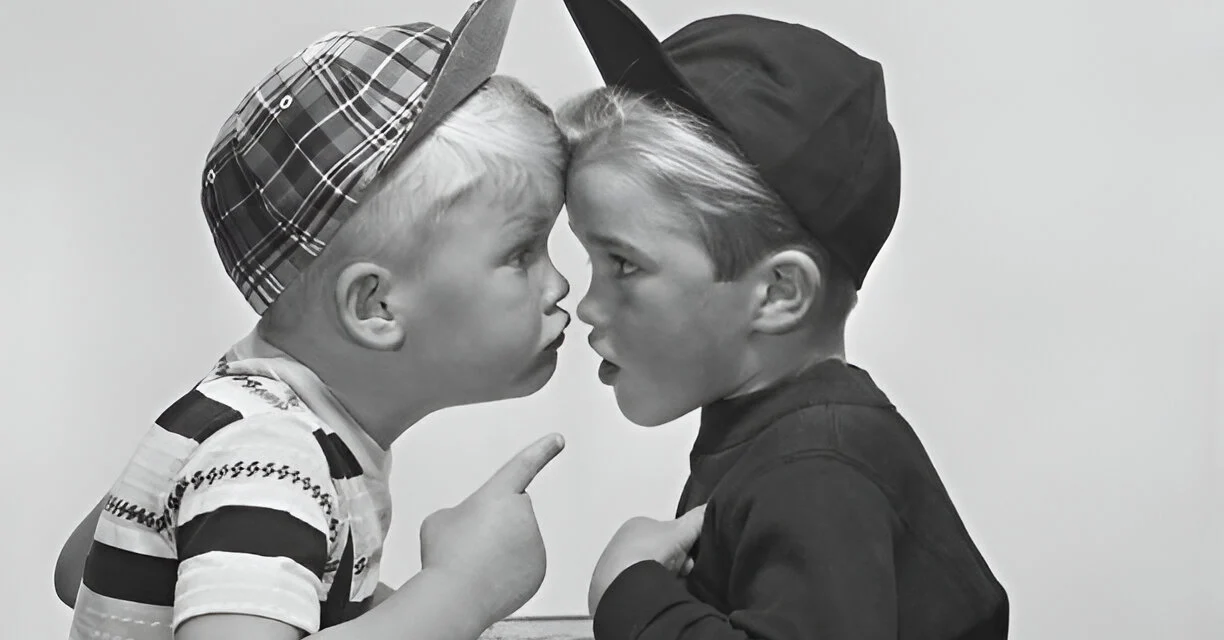
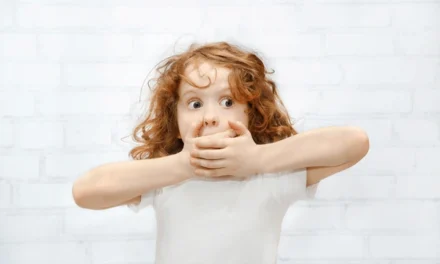

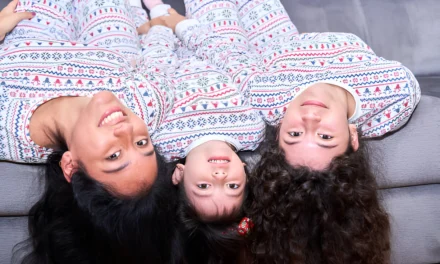

Trackbacks/Pingbacks